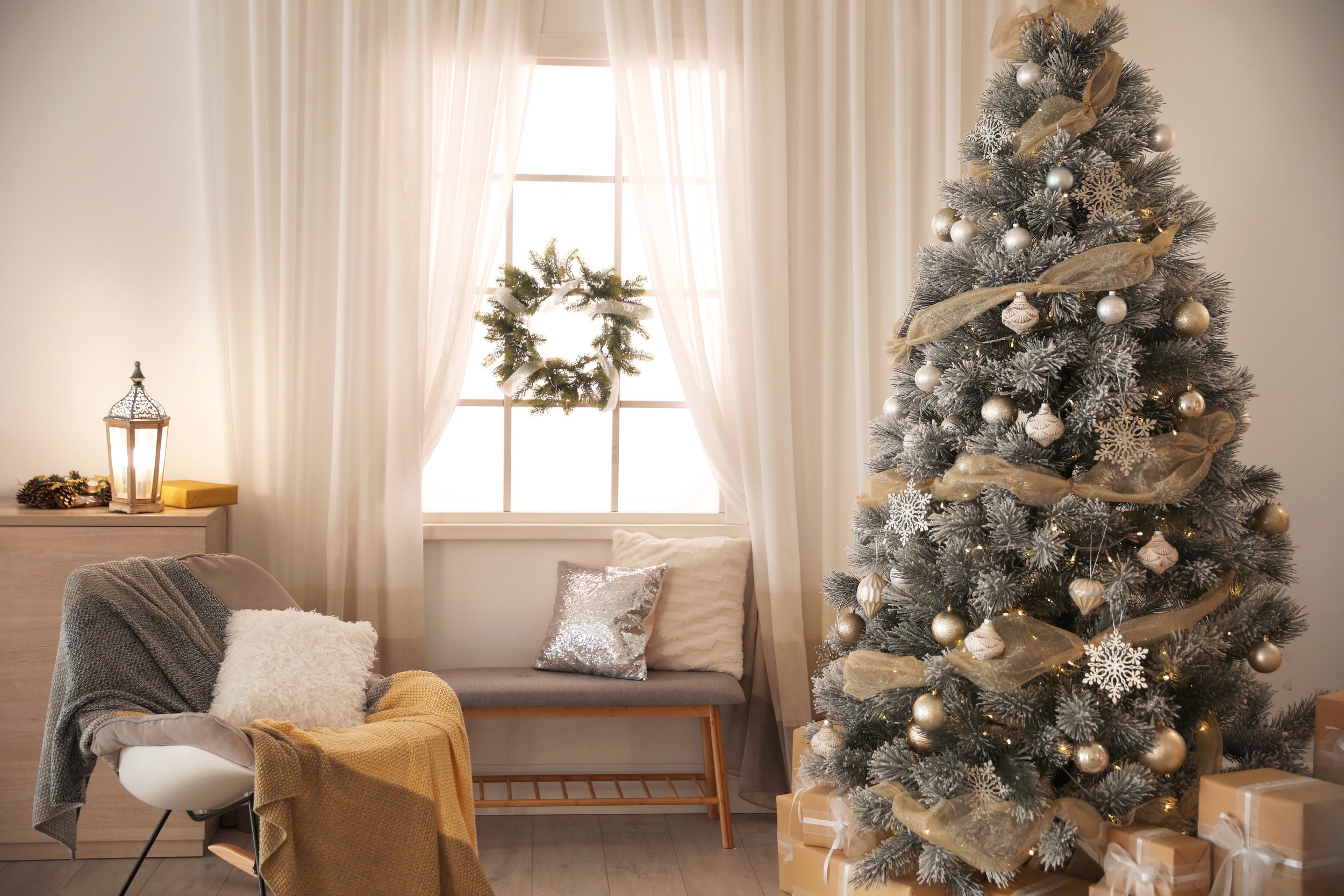Decorating for the Holidays
What color palette should I use for holiday décor?
It’s easy to think we have to stick with red and green for the holidays, but there are no such rules. Santa and his elves won’t put a lump of coal in your stocking for using blue, white or even orange!
Feel free to use your favorite color or pattern as an anchor when planning your holiday décor. The key is to keep it consistent and not to use too many colors or patterns that fight with each other. Love leopard-print? Go for it! Just don’t pair it with plaid.
Allow me to introduce you to one of the designer’s most useful resources – the color wheel. Using the color wheel as a reference helps to know which colors will work together in your décor scheme. The easiest color schemes for beginners to use are complementary, analogous or monochromatic.
Complementary colors are opposite each other on the color wheel, and in fact the traditional colors of red and green are complementary, which is why they’ve worked so well over the years. Another option for a complementary holiday theme could be a warm rust plaid with pops of navy blue. Be careful with colder colors like blues and greens – it often works well to pair these with warm-toned natural materials like wood and brass.
Analogous colors are next to each other on the color wheel, and create a calming effect – an example for the holidays could be a spectrum of violets through to reds and oranges. Monochromatic themes use only one color on the wheel in a variety of different shades or paired with neutrals – imagine a holiday palette of baby blue with cobalt and navy or a citrusy bright yellow and white.
How do I decorate in keeping with the style of my home?
As with any design, good holiday decorating starts with intention. Just as you can use the color wheel to plan your holiday color palette, take into consideration the architectural style, period and scale of your home when you plan your décor. Think about what feeling you want to create – formal, cozy, elegant or inviting to name a few.
If your home is a craftsman bungalow, you could use a William Morris arts and crafts floral fabric as the basis for your décor. Or if it’s a steel and glass contemporary with soaring ceilings, you can play with scale and create a sculptural holiday-inspired installation with garlands or glass balls. Have an overall style in mind and stick to it, whether it’s traditional, eclectic or farmhouse.
Think about the areas you want to decorate and how much time and effort you want to put into it. If going all-out and decorating every room is too overwhelming, focus on the main living spaces with a couple of key areas in each - such as the fireplace or entryway. In addition to holiday décor such as garlands, wreaths and ornaments, you can swap out soft furnishings such as throw pillows and bedding, and add candles and plants. Don’t be afraid to overdo it – Christmaximalism is a thing!
Try to appeal to all five senses when decorating for the holidays. Add some clove or peppermint essential oils or candles to create that delicious holiday smell. And think about using tactile materials like fur and wool as part of your theme. You can also mix hard and soft textures such as shiny glass and metals with sinuous ribbon or fabric.
What is the best layout for holiday lighting?
Again, think about the style and lines of your home. Walk away from your curb and look at your house from a distance – what are the most obvious architectural features? Try to accentuate those with your lighting.
Keep the design principle of repetition in mind here – usually a home will already have repeating architectural features such as roof peaks or porches. Highlight these features consistently with the same color and style of lights and complement with a secondary lighting color or exterior décor such as wreaths in evenly spaced locations.
A modern farmhouse with lots of gables and dormers might look too busy with strings of lights around every roof peak, so choose a couple of the larger peaks for icicle lights while keeping the lines clean around the rest of the home. Asymmetry can work, but it must be intentional.
Where can I fit my Christmas tree?
We’re so lucky here in Montana to be able to cut our own trees. But how many times has that perfect tree not looked so perfect when you got it home? Maybe you had to squash it into a corner or it was too tall for your ceiling.
The old adage of “measure twice, cut once” applies here. Decide where your tree is going to go before you cut it, and measure the space both horizontally and vertically so you know the maximum diameter and height of your perfect tree. Don’t forget to allow for clearance around the tree if it is next to a heavily trafficked walkway – a minimum of 3 feet is recommended for people to be able to walk past without dislodging ornaments from the tree.
You can also move furniture to make space for your tree if you need. Accent chairs are often a similar size to the footprint of a tree, and they can be moved into a bedroom or office to create space. If you have a really tight space for your tree, you can also trim a few branches off the back so it can fit closer against the wall, and repurpose those cut branches into wreaths.
This article was originally published in the 2022 Holiday Issue of 406 Woman Magazine.


